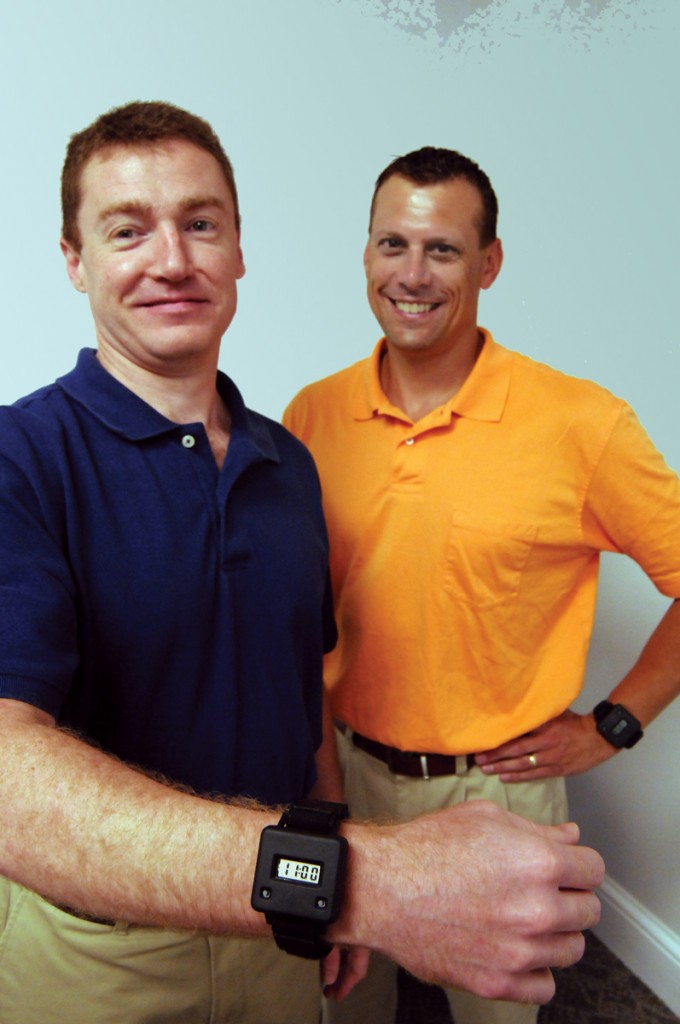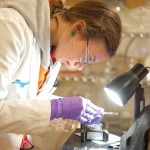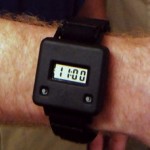Bits & bites
Anna Simon
Overeat, and your wrist could rat you out.
The Bite Counter, a device to measure how much people eat, was conceived over lunch. Eric Muth, a psychologist, and Adam Hoover, an electrical engineer, were building tracking systems for soldiers doing urban police work in war zones. The tracking systems, funded by the U.S. Department of Defense, record soldiers’ body movements as they conduct building-to-building searches for the enemy or use guerilla tactics in urban terrain.
A lunch-break conversation drifted to potential ways the technology could benefit civilians. “We thought about the obesity problem,” Muth says. “They have pedometers to track steps. What if we had something to track bites?”
Hoover cites statistics: One in three U.S. adults and one in six U.S. children are obese. “That’s scary,” Hoover says. “Especially children.”
In South Carolina, 66.9 percent of adults are overweight and 31 percent of adults are obese, according to the Centers for Disease Control (CDC). The CDC reports that 15 percent of South Carolina children and adolescents are overweight, and 16.7 percent of high-school-age adolescents are obese. The problem starts young. Nearly 13 percent of South Carolina children between age two and five are obese, according to the CDC.
Wear it like a watch
So Muth and Hoover decided to build a device that tracks wrist movements to measure bites of food. They wanted it to be simple to operate and nonintrusive so that people would wear and use it. Worn on the wrist like a watch, the device they created tracks wrist movement and records data in the form of an eating diary that can be viewed when the Bite Counter is plugged into a computer.
In 2008, Muth and Hoover disclosed the technology to the Clemson University Research Foundation (CURF), which applied for a patent in 2009 on behalf of Clemson University.
Embarking on the project at a time when the economy was tanking and university research dollars were drying up, Muth and Hoover launched their own company, Bite Technologies, and licensed the technology from CURF in 2010. With CURF’s help, they approached South Carolina Launch for seed funding to build the device. South Carolina Launch, a private nonprofit organization that helps start-up companies move new technologies from university research labs to the marketplace, provided $50,000 in matching funds.
Bite Technologies and Clemson University also received a National Institutes of Health small business technology transfer grant of $148,556 from the National Institute of Diabetes and Digestive and Kidney Diseases to assess the Bite Counter as a tool for food-intake monitoring.
Clemson was issued a patent on the Bite Counter in November 2012, three years after the application was submitted. The researchers ran studies to assess the accuracy of the device. In one study, nearly three hundred people were videotaped as they ate, wearing the device. Their food was weighed and recorded, and graduate students, along with an undergraduate Creative Inquiry team, reviewed the videos and helped collect and analyze the data. The researchers looked at gender, height, weight, age, ethnicity, food eaten, utensils used, and which hand was used to eat. They amassed a database of more than 22,000 bites.
“It does indeed count bites accurately,” Muth says. Now the team is translating bites to calories through research designed to learn what they call “the language of eating.” This will enable users to personalize and fine-tune data the Bite Counter collects based on gender, size, and other factors. For example, the researchers found that, on average, males consume seventeen calories per bite and females consume eleven calories per bite, and taller people consume more calories per bite than shorter people.
They also are further refining the analysis of wrist movements to indicate the type of food eaten. They hope their ongoing research will enable the Bite Counter to tell the difference between a fast-food cheeseburger and a fresh vegetable salad by the frequency of bites; between drinking and eating through the range of wrist movement; and even between drinking from a glass or through a straw and whether the user is cutting food or eating food. Those data could go a long way toward keeping the wearer honest about portion size and calories, Muth says.
In fact, the Bite Counter is more honest than we are about our eating habits, according to one of the team’s recent studies. After eating, study participants were asked how many calories they’d eaten. Some participants were given menus listing what was on their plate. Most participants underestimated calories. Those without a menu far underestimated the calorie count compared to those with a menu, the study found. The general inability of participants to accurately estimate calorie intake, especially those without a menu to use as a guide, told the researchers that current work to more closely correlate bites and calorie count does enhance the benefits the Bite Counter can offer.
“Our research shows it does count better than people on their own,” Muth says. “People will wear it. It relates to calories and people can use it to lose weight without doing anything else.”
A new study planned for this fall will examine whether the device can get people to stop eating when they want to stop eating. Another study will develop a weight-loss protocol. People will start with a certain bite count based on size and gender. They’ll be taught how to use the device and instructed to keep an eating calendar and weigh themselves on a weekly basis. Researchers will look at their weight and reset the bite count to find their individual bite number that gives them an optimal number of bites to lose weight at a healthy pace and then maintain a healthy weight after the desired weight loss is achieved.
Too useful to sit on
Currently Bite Technologies is working with a sublicensing company to find a corporate partner to license the technology and take the Bite Counter down the home stretch from the lab to the marketplace. The inventors hope a big-name, national brand company with experience in marketing other monitoring devices will add the Bite Counter to its product line.
They’ve attended conferences of professional organizations including the Obesity Society, a scientific society that studies obesity, and the American College of Sports Medicine, to let people know the device is available, but the item is pricey. The current Bite Counter sells for $800, with bulk discounts available. Muth and Hoover agree that the price tag is way too high for the consumer market. Most of their sales so far are to researchers and professional health and fitness trainers. They envision a target price of $100 for the consumer version.
They’re passionate about the Bite Counter because they believe it can and will help people live healthier lives.
“I think this technology is too useful to sit on,” Hoover says. “It’s rare as an academic to find something that has the potential to help people in your lifetime.”
Eric Muth is a professor of psychology in the College of Business and Behavioral Science. Adam Hoover is an associate professor of electrical and computer engineering in the College of Engineering and Science. Anna Simon is a freelance writer based near Pendleton, South Carolina, and writes for Your Day, a radio program produced at Clemson University for South Carolina ETV Radio.
For information on licensing Clemson University intellectual property, go to www.clemson.edu/curf or contact CURF at contactcurf@ clemson.edu.







